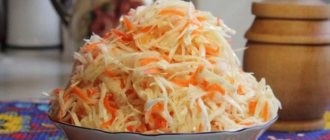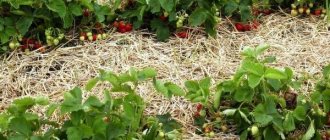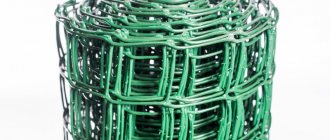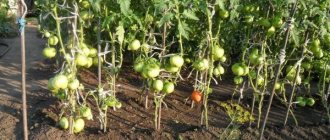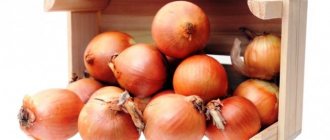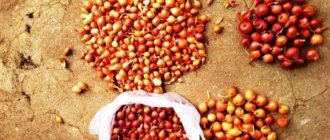The importance of choosing the right salt for pickling cabbage
The quality of sauerkraut is influenced by its type and variety . Depending on these characteristics, the fermentation process occurs differently.
If you choose the “wrong” salt, the product turns out to be peroxided , the leaves become soft and unsuitable for consumption.
When purchasing a product, look at the packaging:
- Name;
- mode of production;
- variety;
- grind number;
- what is it enriched with;
- additives;
- recommendations for use;
- manufacturer's name.
Take note:
Delicious recipes for sauerkraut with apples for the winter
Delicious sauerkraut recipes without added sugar
Simple, quick and tasty recipes for pickling cabbage for the winter
Healthy iodized salt
This salt is undoubtedly a useful product. But not when you need to pickle (ferment) vegetables for the winter. It's of no use here.
The fact is that at the moment the cabbage begins to ferment, lactic acid organisms begin to act.
Iodine slows down the whole process simply by its presence. It was for this reason that my blanks ended up in a landfill. The fermentation process slowed down, and I got a completely unpleasant (dirty-looking) cabbage that did not have the characteristic sourness and crispness.
Selecting the type of salt
The quality of the future workpiece depends on the type of product.
Food
Cooked food - mineral substance . In appearance - white or transparent crystals, odorless, but with a pronounced taste.
Salt - sodium chloride : Na - 39.4%, CI - 60.0%.
Chemical composition of table salt (per 100 g):
- potassium - 9 mg;
- calcium - 368 mg;
- magnesium - 22 mg;
- sodium - 38710 mg;
- sulfur - 180 mg;
- phosphorus - 75 mg;
- chlorine - 59690 mg;
- iron - 2.9 mg;
- cobalt - 15 mcg;
- manganese - 0.25 mg;
- copper - 271 mcg;
- molybdenum - 110 mcg;
- selenium - 0.1 mcg;
- fluorine - 2 mcg;
- zinc - 0.6 mg.
By origin and method of extraction:
- Stone . They are mined in mines and quarries. Contains few impurities, up to 99% sodium chloride. Has low humidity.
- Evaporation . Natural or artificial brines are evaporated. Natural ones are extracted from the ground, artificial ones are obtained by dissolving rock salt in wells. It is characterized by low hygroscopicity, high sodium chloride content, and a small amount of impurities.
- Self-planting . Ozernaya, it is mined from the bottom of salt lakes. Precipitated, it forms layers. Natural impurities - silt, sand, clay - give the color a yellow, gray tint. Characterized by high humidity.
- Sadochnaya . Extracted from the water of oceans and seas. Water is diverted into large but shallow artificial pools. Natural evaporation occurs and salt precipitates. Sadochnaya has many shades due to the large number of impurities.
According to GOST 51574-2000, table food is divided into four grades depending on the purity of the product , elements of the chemical composition, and particle size:
- Extra. The product is white, without impurities. Particle size within 0.8 mm.
- Higher. Pure white crystals up to 1.2 mm in size.
- First. Grayish grains up to 4 mm. In addition to sodium chloride, it may contain other minerals.
- Second. The composition is closest to natural.
The normal salt intake for humans is 11-15 g per day.
Benefits of consuming table salt:
- has a rich mineral composition;
- has antiseptic properties;
- adds flavor to dishes and acts as a flavor enhancer.
Disadvantage : an excess leads to the development of diseases of the cardiovascular system and gastrointestinal tract.
Marine
Salt obtained through the natural process of “evaporation” from the sea is called sea salt.
Interesting! The marine product has been mined for over 4,000 years.
Chemical composition (per 100 g):
- potassium - 9 mg;
- calcium - 368 mg;
- magnesium - 22 mg;
- sodium - 38710 mg;
- sulfur - 180 mg;
- phosphorus - 75 mg;
- chlorine - 59690 mg;
- iron - 2.9 mg;
- cobalt - 15 mcg;
- manganese - 0.25 mg;
- copper - 271 mcg;
- molybdenum - 110 mcg;
- zinc - 0.6 mg.
Real sea salt is black, yellow or pink . Bleached does not have beneficial qualities.
Characteristics of sea salt:
- has a rich mineral composition;
- used in the food, chemical industry, medicine;
- The iodine included in the composition does not lose its beneficial properties over time.
When preparing dishes, it is recommended to replace table food with sea food - the body will receive more useful microelements.
Iodized
Iodized is a type of table salt to which iodide and potassium iodate have been artificially added . This variety appeared in the 60s of the 20th century.
Chemical composition (per 100 g):
- calcium - 368 mg;
- magnesium - 22 mg;
- sodium - 38710 mg;
- potassium - 9 mg;
- phosphorus - 75 mg;
- chlorine - 59690 mg;
- sulfur - 180 mg;
- iron - 2.9 mg;
- zinc - 0.6 mg;
- iodine - 4000 mg;
- copper - 271 mg;
- manganese - 0.25 mg;
- cobalt - 0.015 mg.
Inexperienced housewives often wonder whether it is possible to ferment, pickle, or pickle cabbage with iodized salt . The answer is no. Lactic acid bacteria do not multiply with a large amount of iodine, and the fermentation process is disrupted. The cabbage turns out slimy and not crispy. Over time, this leads to damage to the workpiece.
Benefits of Iodized Salt:
- saturates the body with iodine;
- participates in the prevention of thyroid diseases.
Flaws:
- evaporates completely at high temperatures;
- cannot be used for pickling.
How we ate sauerkraut
As a result, I, as a hereditary “soloist” (my grandmother and mother are masters in this matter), received a responsible editorial task: salting.
I grew up in a family where pickles were held in high esteem, and therefore the taste of pickled mushrooms, tomatoes, pickled apples (and sometimes my grandmother also fermented watermelons) has been familiar to me for as long as I can remember, that is, always. But sauerkraut is my favorite. Without it, the vinaigrette won’t be a vinaigrette, and you won’t be able to cook normal cabbage soup. The best fermentation is small whole heads of cabbage. The stalk from such a head of cabbage—yellowish-pinkish, crunchy, and even slightly oily—was the greatest delicacy for me.
Stop. Stop drooling. Let's get down to business. Of course, on the Internet, where you can find everything, there are scans of old, Soviet GOST standards for “Sauerkraut.” I studied both the old one, 1956, and the newer one, written in the 70s. The first describes how to ferment the beloved Russian vegetable in doshniks - large tanks located in the open air. The second is more modern, where, for example, the finished product is supposed to be covered with polyethylene. If you are curious, find it and compare. Everything is described in detail: how to chop vegetables, and how to apply pressure, and how to pierce the cabbage with a peg so that the gas formed during fermentation comes out. There is even a warning in GOST that cabbage trays need to be washed with caution: first check to see if there is any gas accumulation at the bottom by lowering a burning candle there. If it goes out, you can only wash the doshnik with a gas mask...
Well, my task was much simpler. Just ferment two three-liter jars. The recipe is at my discretion. At home I prepare cabbage in different ways: with carrots, with beets, with cranberries, with Antonovka... My favorite pickling is with carrots and cumin. That's what she did.
Of course, mid-April, to put it mildly, is not the season for pickling. That is OK. Cabbage is now perfectly stored, retaining its strength and juiciness until spring - just what you need. True, the famous variety “Slava” - the best for pickling - is not easy to find today. Therefore, I simply choose flat-shaped and whiter heads of cabbage. Then it's a matter of luck. If you come across a vegetable that is crunchy and sweet, you don’t have to worry about salting, it will be delicious.
Let me remind you that the purpose of our experiment was simple: to check whether salting with iodized salt differs from regular salt. It is clear that we did not plan any strict scientific approach. So, personal experience, nothing more.
In a large basin, I chopped a couple of heavy heads of cabbage, added carrots (by the way, a lot also depends on its sweetness), caraway seeds, allspice, and bay leaves. I filled two jars with vegetable crumbles, put 1.5 tablespoons of salt in each, and a teaspoon of sugar (only the hardest, even tough varieties of cabbage survive until spring, and sugar will help speed up fermentation). And she filled all this beauty with clean water. It is clear that regular salt was used in one jar, and iodine in the other.
The finished jars stood in a warm place for a day (it would have been better if there were a couple - my omission, but it happened) and then went into the editorial refrigerator. From where we extracted them a week later to take a sample.
About 10 people took part in the tasting. Our photojournalist had already filmed the process and left, but the editorial people were still catching up, having heard about the unexpected entertainment during working hours.
Nobody knew which jar contained which product. The most experienced tasters smelled the jars - the smell of fermentation, like the color, is very important. The less experienced simply chewed, compared, discussed.
It is clear that assessment is a subjective matter, depending on personal preferences and taste, we are not professional tasters. Therefore, we simply agreed that everyone would give the best pickling a “plus”, and the second jar would remain with a “minus”. Moreover, everyone distributed the “cons” and “pros” blindly, not knowing which bank had which ambassador, and without seeing the results of other participants. And although there were those who liked both options (I was pleased), they did not change the rules. Otherwise how to compare?
I personally liked cabbage fermented with regular salt better. But I knew which bank it was in, and therefore my opinion can hardly be considered unbiased. Nevertheless, at first the people, acting blindly, also preferred classic salting. But then the benefits suddenly fell in favor of another jar, with iodine. The cabbage in it fermented more intensely - a little more sour, a little spicier and a little softer. The color, by the way, was also slightly different. With iodine it’s a little less pure, greyish, but that’s if you look closely. Most didn't pay attention to the color. We looked at the root - taste and crunchiness. The result is 6:4 in favor of classic salting.
But the experiment is not over. The cabbage, to be honest, turned out to be not quite ready, it was a bit tough. Therefore, we will repeat the control “snack” in another week and report how the product was stored. And at the same time, we will look for technologists who could professionally explain the effect of iodized salt when used in vegetable preparations.
Grind Selection
Salt can be finely or coarsely ground. The size of the salt affects the fermentation process . The grind number is indicated for the highest, first and second grades.
| Grind no. | Crystal size | Content of large crystals |
| 0 | up to 1.2 mm | no more than 10% |
| 1 | from 1.2 mm to 2.5 mm | no more than 3% |
| 2 | from 2.5 mm to 4 mm | no more than 5% |
| 3 | from 4 mm | 15% |
Large/stone
Refers to sedimentary minerals . Consists of sodium chloride and impurities. In nature it looks like a stone. After processing and purification, it takes on the appearance of familiar salt.
In its natural form it happens:
- transparent;
- opaque but translucent;
- white with a glassy sheen.
Reference. Large deposits of rock salt in Russia are Solikamskoye, Iletskoye, Irkutskoye.
Depending on the deposit, the composition of impurities is different , therefore the color of the substance is different:
- iron oxide - yellow, red;
- decomposed organic matter - from dark brown to black;
- clay - gray;
- potassium chloride - blue, lilac.
Small or large?
Already when describing the types of salt, it was mentioned that it can be of different grinds. Particle size is really important for pickling and preservation. Coarse table salt is traditionally considered the best option for home preparation. Let's try to understand why this happens using specific examples.
- Cabbage . For pickling, choose table salt with large or medium crystals. Small grains quickly dissolve and disrupt the normal fermentation process. As a result, the cabbage turns out to be more sour than salty. And such a product is stored less. In turn, large granules dissolve more slowly, and this allows lactic acid to ferment moderately without peroxidizing. This cabbage will be crispy, piquant, and can be stored for a long time.
- Mushrooms . The texture of mushrooms is dense and meaty, and when canning you want to preserve these properties. However, the product behaves very capriciously in preparations. Therefore, it is better not to take risks and not use salt with additives. This can lead to an unpredictable effect - the appearance of bitterness and an unpleasant odor, the proliferation of acidic bacteria, loss of elasticity, etc.
- Fish . The biggest danger when salting fish is botulism. Coarse table salt also allows you to avoid the risk of poisoning. Its crystals penetrate the protein tissue gradually, evaporate excess moisture and create an unfavorable environment for the growth of bacteria. In addition, it is quite difficult to over-salt fish with coarsely ground spices: it will absorb as much seasoning as it needs to be tasty and safe.
- Greens (parsley, cilantro, basil, dill) . For tender greens, coarse table salt is also suitable. Just put chopped greens in jars, sprinkle with crystals, and they will stay fresh until spring.
- Cucumbers and tomatoes . These are very tender vegetables that contain a lot of water. In order not to disturb their water “balance”, salting should also proceed slowly. In this regard, coarse grinding is the best you can find for canning. The crystals moderately saturate the vegetables with salt, do not allow them to ferment and prevent the marinade from acidifying.
By the way, if you are interested in reliable recipes for pickled tomatoes, look for them in our article.
- 7 amazing recipes for pickled tomatoes for every taste (with photos)
Original, but at the same time not at all complicated recipes for pickling tomatoes for the winter.
Another reason to use coarse or medium salt is that this is what all recipes are aimed at. If you prefer fine grinding, there is a risk of incorrectly calculating the proportions and over-salting.
Algorithm for proper salting
Stages of proper salting:
- They take late varieties of cabbage - it is distinguished by crispy, juicy leaves and strong heads.
- The forks are cleared of the upper leaves, cut into two parts, and the stalk is removed.
- If the cabbage is clean, without insects or signs of rotting, then it is shredded.
- If small insects are found inside, the head of cabbage is divided into leaves and washed under running water. Another way is to immerse the halves of a head of cabbage in salted water for 2-3 minutes.
- Carrots are washed, peeled and grated on a coarse grater.
- Mix vegetables in a large wide container.
- Mash until the first juice comes out.
- Add salt and stir.
- They place the load.
At room temperature, cabbage ferments for 3-4 days . Every day the mass is pierced with a wooden stick in several places to release carbon dioxide and the foam is removed. It is the presence of foam on the surface that tells you that it’s time to pierce the cabbage.
The finished product is transferred to clean and dry glass jars . Place in a cool place.
What to add to cabbage
Here, of course, it is a matter of taste. But it is highly recommended to add carrots even to jars of cucumbers . It makes cucumbers and cabbage crispy, gives color and flavor.
Then there is room for imagination . You can add cumin, dill seeds, cloves, hot and ground peppers, beets, apples, cranberries, and lingonberries.
put whole cabbage leaves on the bottom of the fermentation container and on top, under pressure,
How to salt correctly and what salt is best to use for pickling and canning?
Canned and salted vegetables are an excellent replacement for fresh produce in the fall and winter. Due to their rich and unusual taste, they are often used as ingredients for preparing a variety of dishes.
However, even experienced housewives often encounter problems when jars explode, crispy vegetables become soft or have an unpleasant aftertaste. One of the reasons for such troubles may be the wrong choice of salt, which is used when preparing marinade or brine.
To ensure that pickled and salted vegetables always turn out tasty and do not spoil for a long time, you need to know what types of salt are most often used to prepare various types of preparations.
Benefits for pregnant and lactating women
The product can be used by expectant mothers. The vitamins and microelements in sauerkraut bring many benefits to a woman during pregnancy and help in the formation of the fetus. But it is especially important to use high-quality vegetables and the correct yeast technology.
Cabbage is a foaming agent that can cause gas in a nursing mother and baby. But if you use it a little, this side effect is unlikely to be felt.
A strict diet for a nursing mother is relevant in the first 2-3 months, after which you can gradually add regular foods to the diet, including cabbage.

